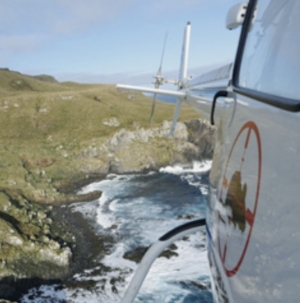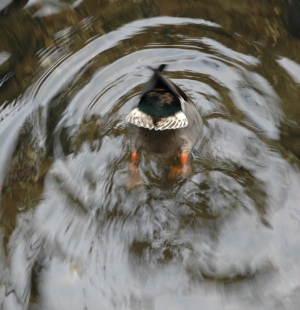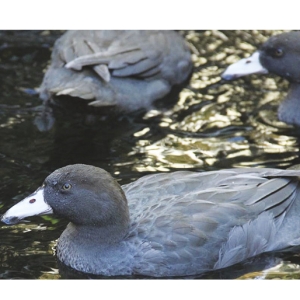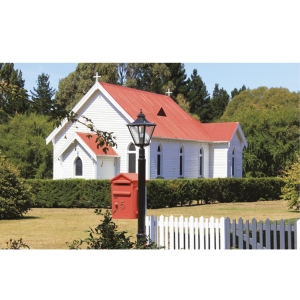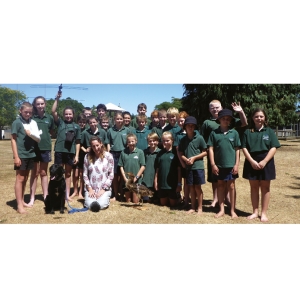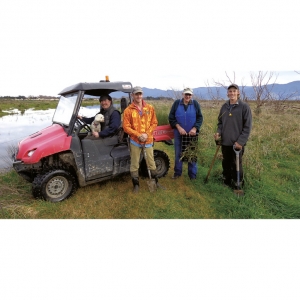Displaying items by tag: Conservation
Million Dollar Mouse pest drops completed
The ambitious Million Dollar Mouse pest eradication project on remote Antipodes Island in the sub-antarctic was completed ahead of schedule in July.
A second helicopter drop of rodent bait across the island was finished in July, following a first phase completed on June 29.
“Despite very unsettled weather conditions, the Million Dollar Mouse team have done an outstanding job of making use of every available weather window to get the bait drop completed,” Ms Barry, Minister of Conservation said.
“This is the most challenging pest eradication ever carried out in New Zealand and is a globally significant conservation achievement, safeguarding a unique, remote and forbidding land and the many extraordinary species living there.”
Mice are the only introduced predator on the island, which is home to endemic species such as the Reischek’s and Antipodes Island parakeets, snipe and pipit, thousands of seabirds and marine mammals.
“The second bait drop by mid-July is a major step on the way to returning Antipodes to the way it was before the arrival of humans, pests and weeds.
Million Dollar Mouse was jointly funded by DOC, the Morgan Foundation, Island Conservation, WWF-New Zealand and public donations.
Total eradication of mice cannot be confirmed until a monitoring team visit the island in 2018.
To find out more, visit the Million Dollar Mouse website
Mallards in focus – and still under threat
There is an erratum that is worth mentioning – in regards to the shallow ponds being most used by broods. The shallow ponds are all less than 43cm deep. This is the depth that is recognised in literature as the maximum depth adult mallards can reach when tipping up to feed (Phillips 1923 & Olney 1960 in Perret 1962).
Additionally, staff have now completed sifting through the 250,000+ photos from our ‘Operation Duck Pond’ study. As anticipated, ponds in Southland that were used most often by broods had the following attributes:
- A greater area of shallow feeding zone, defined as pond depth being less than 43cm (the accepted maximum depth an adult duck will feed on the bottom). The majority of the top producing ponds were in fact, 100 percent shallow feeding zone. This resulted in many photos of feeding ducks, “heads down, bums up!”
- A higher availability of food items present (such as macroinvertebrates: waterboatmen, freshwater snails, etc). Obviously, there are many factors that affect the presence and abundance of these food items in a pond.
- A suitable level of shelter particularly from the south and west pond edges, and overhead cover present along the western edge.
- A fence to keep stock off the pond periphery so that vegetated edges were not grazed by livestock. Whether this is a relationship with stock disturbance, or degree of vegetation, we do not know.
- Creating shallow (or seasonal) ponds and wetlands that are protected from the elements will be a broods favourite retreat. These factors, coupled with successful predator control should see more ducklings (and mothers) survive the breeding season. However, that leads us to our next study.
This upcoming mallard breeding season the game cameras will be placed throughout the landscape aiming to capture images of mallard nest predators, namely stoats, ferrets and feral cats. This will be combined with a heavy trapping regime and monitoring of nests within a marked study area. We look forward to reporting on our results!
Perret, N.G. 1962. The spring and summer foods of the common mallard (Anas platyrhynchos platyrhynchos L.) in south central Manitoba. Unpubl. MSc Thesis, University of British Columbia, Vancouver.
And -Yeh – looks like the same cat, obviously included the pond in its circuit – have a dozen photos where you can just see the ears and head in the grass, where it obviously just sat and watched for ages! (Camera was set on time lapse, taking photos every 5 minutes).
Erin Garrick
DUNZ member honoured for conservation work
Conservation rates highly with DUNZ members, so it’s not surprising that one of our own received an award for commitment to the cause in this year’s Queen’s Birthday Honours list.
Andrew (Andy) Graeme Lowe, of Havelock North, a long-time member of Ducks Unlimited, was made a member of the New Zealand Order of Merit (MNZM) for services to conservation.
Andy is the managing director of Lowe Corporation in Hawke’s Bay and has been the initiator and vision-keeper for Te Matau a Maui, the Cape Kidnappers Sanctuary, which is the largest privately funded mainland wildlife reserve in New Zealand.
In 2006, Andy and other land owners began an ambitious project to restore the Cape Kidnappers peninsula back to its former wildlife glory. Covering 2500 hectares, the sanctuary has the most diverse range of native bird life on coastal mainland New Zealand.
Cape Sanctuary is owned by Julian Robertson and the Hansen and Lowe families who share the vision to restore the coastal community of land birds, sea birds, reptiles and invertebrates that once flourished there.
The project aims to achieve significant biodiversity gains alongside existing land uses of farming, forestry, recreation and tourism. The sanctuary includes a DOC reserve of 13ha.
There is also the Cape to City venture, a wide-scale predator control and ecological restoration project over 26,000ha of land between Hastings and Cape Kidnappers, extending south to include Waimarama and forest remnants at Kahuranaki. This is a sister venture to the successful Poutiri Ao o Tane ecological restoration project in the Maugaharuru ranges, near Tutira.
The Cape Sanctuary project is also part of Cape to City and is a partnership between the Hawke’s Bay Regional Council, DOC, Manaaki Whenua – Landcare Research and various landowners and businesses, and has funding from the Aotearoa Foundation.
Andy is also involved with the Martins Bay restoration at the end of the Hollyford Valley in Fiordland National Park. Known as a “biodiversity hotspot”, the area has unparalleled marine and terrestrial landscapes, habitats, flora and fauna, ranging from fragile dune systems and wetlands to unique prodocarp forest, and is the only place in the country where bottlenose dolphins enter a fresh water lake.
Whio in decline
Whio in decline…
The whio (blue duck) is one of New Zealand’s ancient endemic waterfowl species and is classified as Threatened (Nationally Vulnerable) in the New Zealand Threat Classification System 2012, and listed as Endangered on the IUCN Red List of Threatened Species.
North Island and South Island whio populations are genetically distinct (though they are not described as sub-species) and are treated as separate management units. The whio has experienced rapid declines (particularly in the South Island) in abundance and distribution, nowhere common. It lives at low densities in severely fragmented populations. The most recent estimate of total population numbered 1200 pairs at most.
The most notable decline driver comes from introduced mammalian predators, with predation of eggs, young and incubating females. Stoats are the most significant threat and stoat control is a main focus of management activities.
The blue duck’s widespread decline throughout South Island beech forests areas has highlighted the insidious effects of mast-seeding beech trees, which result in great predation pressure, as rodent populations explode, causing a lagged increase in stoat populations which seek alternative prey when rodent numbers crash. A malebiased sex-ratio throughout the range, indicates that predation during incubation is significant.
One of the major conservation management tools for whio is captive breeding for release into the wild. The blue duck has been held in captivity for many years, and its husbandry requirements are understood. The aim is to maximise productivity of the captive breeding programme, and ensure that captive-bred ducklings are released at the highest priority sites. Captive breeding has proven highly effective, and is vital in aiding the recovery programme with the re-establishment and rebuilding of viable populations throughout the former range.
The Isaac Conservation and Wildlife Trust provides the largest output of blue duck juveniles annually, with its waterfowl aviaries being the most successful captive breeding enclosures in New Zealand for North Island blue duck. The Trust currently holds two North Island blue duck breeding pairs. These breeding pairs can lay up to three clutches per season, with an average of six eggs per clutch. All eggs are collected for incubation and hand rearing.
The Trust is a significant participant in the WHIONE programme, which consists of retrieving wild eggs each breeding season from South Island pairs for artificial incubation and rearing in captivity, with a subsequent release of juveniles once fledglings have been hardened in our fast water facilities and are at a lower risk of predation. Releases take place in natal territories or at new sites around the South Island to increase numbers and genetic diversity across sites or re-establish lost populations. Since 2016 the Trust has been retaining cohorts of South Island blue duck juveniles for flock mating, to initiate a captive breeding population across several South Island facilities. The Trust will move out of North Island birds and hold three pairs of the South Island blue duck.
Each season for the last 12 years, the Trust has also received North Island blue duck juveniles bred by other captive institutions nationwide, which are transferred for pre-conditioning in fast flowing raceways prior to release into the wild.
Sabrina Luecht
Wildlife Project Administrator
The Isaac Conservation and Wildlife Trust
Isaac Conservation Trust
The Isaac Conservation and
Wildlife Trust
The Isaac Conservation and Wildlife Trust, established in 1977 continues the land rehabilitation and conservation work of Sir Neil and Lady Diana Isaac.
The Trust is self-funding and does not solicit for monies. It is the assets, bequeathed to the Trust from Sir Neil and Lady Isaac that provide the income to continue their philanthropic contribution to conservation.
The main focuses are the conservation of endangered native flora and fauna, the conservation of heritage buildings and the study of conservation through education and research. This study of conservation and the environment is embodied by funding two post graduate scholarships annually, at both Canterbury and Lincoln Universities.
Specialised captive breeding of New Zealand native birds, reptiles and fish, with the aim of reintroduction into the wild, is carried out to stabilise and reverse declines in at-risk species. The Trust currently holds New Zealand shore plover, orange-fronted parakeet, red-crowned parakeet, black stilt,
blue duck, brown teal, Cook Strait tuatara, grand skink, Otago skink and Canterbury mudfish.
The Trust also breeds Cape Barren geese and mute swan, which are donated to Ducks Unlimited New Zealand.
The Trust has decades of animal husbandry and captive breeding experience, specialising in New Zealand species on the brink of a high threat status. This area of the Isaac Conservation Park is off limits to the public due to the fragility of its inhabitants.
Lady Isaac was not just a wildlife conservationist, but also a conservationist of historic buildings. The development of the Isaac Heritage Village is comprised of 14 relocated historic Canterbury buildings.
Many of these unique and irreplaceable buildings (c.1860 to 1940), were threatened with demolition. The Heritage Village will eventually be open to the public. Revegetation of plants on the Isaac Conservation Park land includes a focus on the restoration of the Otukaikino River, feeding into the Waimakariri River. To date the Trust has fenced off waterways from stock, extensively cleared weeds, and planted over 45,000 eco-sourced natives. Along the corridor of native plants that now line the river, land has been set aside to provide a public walkway.
The Trust has been set up to exist in perpetuity to provide a benchmark in conservation, continuing the legacy of Sir Neil and Lady Isaac.
Catherine Ott
Fears for Whio
Fears for whio after weather bomb
February (2017) brought a highlight on the conservation calendar at Blue Duck Station – the release of 14 rare juvenile blue ducks (whio) into the Kaiwhakauka Stream.
After months of preparation in which the young whio were raised in captivity and prepared for life in the wild on an artificial stream, teams from Blue Duck Station, the Department of Conservation (DoC), Horizons, and Whio Forever saw the ducks off into their new home as part of a community event at Blue Duck Falls. A representative from the local iwi blessed the ducks before volunteers released them into the Kaiwhakauka, watching as they swam upstream into their new habitat. The long term aim is for the ducks to form breeding pairs along the length of the Kaiwhakauka stream, further strengthening the local whio population.
Unfortunately, the joy was short lived. In March a weather bomb wreaked havoc along the Kaiwhakauka. Over 100ml of rain fell in one day, causing flash floods and land slips that battered the Station. The environment around the Kaiwhakauka changed drastically – fallen trees and boulders littered the river, while flooding risked washing away the newly released whio. High water levels also threatened the whio’s ability to feed in the stream and with the stream bed turned upside down, it is unclear how much feed is left for the ducks.
While the damage is severe, the team at Blue Duck Station remain optimistic. In the coming months they will be assessing the impact and planning how best to help the ecosystem recover. Sightings of juveniles have continued in the surrounding areas since the floods, so hopes are high that habitats can be restored for further releases in the future and that Blue Duck Station will continue to be a haven for whio.
Maxine Ross, David Atkinson.
What is a wetland
What is a wetland?
A wetland is an area of land whose soil is saturated with moisture either permanently or seasonally.
Such areas may also be covered partially or completely by shallow pools of water
Wetland care New Zealand
Wetland Care
New Zealand

Our business is to harness community, business and government resources to restore and develop lost wetland areas within New Zealand.
Wetland Care members recognise that wetlands are vital to the wellbeing of the environment, acting as huge ecological sponges by soaking up pollutants and filtering water before it reaches streams, rivers, lakes, aquifers and the sea.
Our initiatives focus on matters as far-reaching as groundwater replenishment, flood control, nutrient and contaminant management and climate change – all critical factors for the conservation of freshwater and saltwater wetlands and marshes.
We want to preserve and conserve the flora and fauna of our most endangered ecosystem so that vibrant wetlands are our legacy to future generations.
Funding for projects comes from the Waterfowl and Wetlands Trust established by Ducks Unlimited New Zealand Inc in 1991 and for specific reasons from an assortment of trusts and community based charitable organisations that like our work. Membership donations and corporate memberships also help.
Central to Wetland Care New Zealand’s mission is forming partnerships with people and organisations with similar aims.
Tutukaka Landcare Coalition
Tawharanui Open Sanctuary Society Inc.
Ducks Unlimited Operation Pateke
Port Charles release 2005 at Coromandel
Henley Trust, Masterton
Karori Wildlife Sanctuary, Wellington
Kitchener Park, Feilding
Manawatu Estuary Trust, Foxton
Mangaone Wetland, Raetihi
Masterton Intermediate School
Steyning Trust, Hawke’s Bay
Travis Wetland Trust, Christchurch
Wairo Wetland, South Wairarapa
Wetland Trust New Zealand, Rangiriri
Waitakere Branch Forest and Bird
Yellow-eyed Penguin Trust, Dunedin
Cape Kidnappers pateke release, 2008
and 2009
Fiordland pateke release, 2009.
Tracker dog helps find and protect birds
Emma Williams and I are helping the South Wairarapa Schools - Martinborough, Pirinoa and Kahutara - to achieve some of their environmental studies assignments and general objectives.
Emma has visited Kahutara School once already and her talk was very successful, she had her dog Kimi with her and the children loved that.
Then Emma went up to Hawke’s Bay and further north where she worked with older young people. Emma has developed a package for schools on wetlands and wetland birds with bitterns in particular, and where they are in the habitat.
Emma’s lovely black labrador Kimi, helps with her work and accompanies her on visits to schools.
We will start another series of school visits in the South Wairarapa during August and plan to visit Wairio wetlands at some stage and track bitterns that have radio transmitters attached to them.
The overall plan is to introduce pupils to wetland conservation and so attract some new young members for Ducks Unlimited!
Gill Lundie
Wairio Wetland Planting Day – June 22, 2017
Another great day on the journey to restore the Wairio Wetland!
About 40 good folk, including a large and enthusiastic contingent from the local Kahutara Primary School, turned up on a nice fine Wairarapa day to add 300 odd trees to the thousands planted over the last 12 years at the Wetland.
Don Bell, a great supporter of the project, had all the plants on site and some good keen lads from Palliser Ridge Station and Trevor Thompson from DUNZ had holes dug before the planting contingent from the school and others arrived. Thus, the actual planting proceeded at pace and all adjourned for refreshments before mid-day. Apart from one attempt at synchronised swimming (it is a wetland after all) all went to plan! It is hard to beat a day out in the elements helping to make things better in this land of ours!
Ross Cottle

